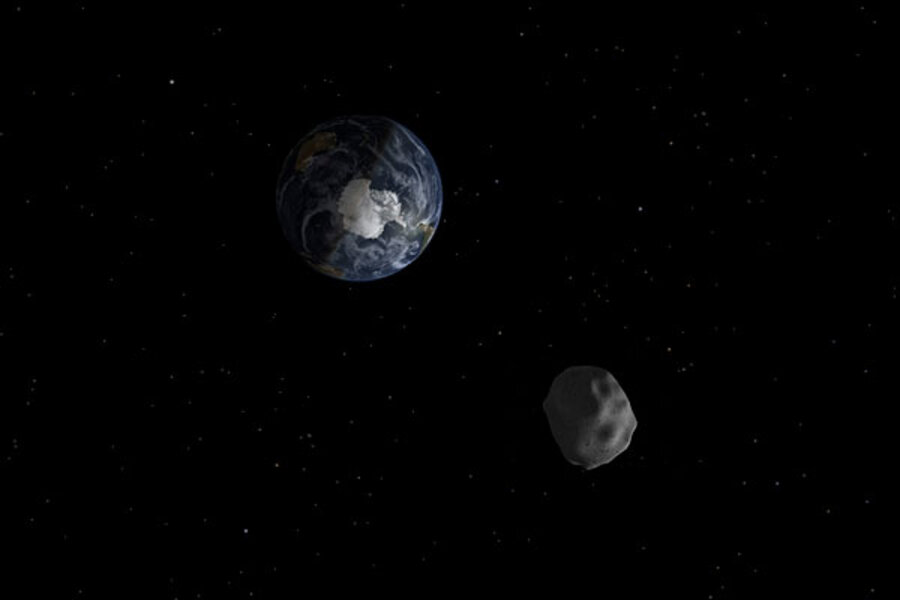Friday's near-miss asteroid could help track more dangerous ones
Loading...
Asteroid 2012 DA14 is on course to buzz Earth Friday, making its closest approach at 2:24 p.m. Eastern Standard Time.
The object, roughly 150 feet across, poses no threat to Earth. But its close approach, which will bring it to within 17,200 miles of the planet, is a record for a known object of that size.
Coming so close, the asteroid represents a prime target for scientists who are interested in the object for scientific reasons as well as to improve their abilities to forecast asteroid orbits as a way to keep tabs on potentially hazardous objects.
Factors that influence those orbits can be subtle, notes Ed Beshore, an astronomer at the University of Arizona at Tucson and a key player in NASA's upcoming OSIRIS-Rex mission to asteroid 1999 RQ36. The launch is slated for 2016.
For instance, when sunlight hits the surface of an rotating asteroid, the asteroid returns that energy to space in the form of heat.
"The heat acts like a tiny rocket thruster that can push asteroids out of otherwise harmless orbits," he says. The reason: A rotating asteroid sheds the heat unevenly across its surface, in effect sloughing it off in the direction of "dawn" on the asteroid. This direction may or may not coincide with the direction the asteroid is traveling along its orbit.
Indeed, this force, known as the Yarkovsky effect, is thought to help resupply the inner solar system with asteroids that otherwise might have stayed in the main asteroid belt, which lies between Mars and Jupiter.
A year ago, Dr. Beshore says, one of the mission's team members performed "a really exquisite set of measurements using radar data and came up with a preliminary estimate for the kinds of forces" this effect imposes on OSIRIS-Rex's target asteroid.
It's about the same as "the force that you feel when you hold a couple of grapes in your hand, he says, adding "that force, applied over millions of years, can literally move these mountains of rock around."
Since the force also plays a role in shaping and reshaping the orbits of near-Earth asteroids, "it's really quite important for us to make sure we understand this force much better."
It also helps explain why researchers will be aiming optical telescopes and radar at close-passing objects like Friday's 2012 DA14.
Researchers will be staffing optical telescopes to measure changes in the asteroid's reflected light as it rotates – a key element in calculating the Yarkovsky effect. Radar will be used to pin down the asteroid's shape, reveal some of its surface features, and determine its rotation rate and direction.
As close as 2012 DA14 is approaching, it's still a small object, adds Amy Mainzer, who heads a project at NASA's Jet Propulsion Laboratory to use data from NASA's WISE orbiting infrared telescope to hunt for near-Earth objects – especially those dark enough to make them tough to see visually. Even though the objects are dark, they still radiate heat.
A similar observing effort revealed a treasure-trove of data on asteroid 2005 YU55, an aircraft-carrier-sized object that passed by Earth just inside the moon's orbit in November 2011.
The object's large size was a key factor in the relatively high quality observations astronomers gathered, Dr. Mainzer says.
For those of us who lack direct access to radars at the Arecibo Radiotelescope in Puerto Rico or to NASA's radar in Goldstone, Calif., the agency will be webcasting the event from the Jet Propulsion Laboratory, with commentary for the half hour that brackets the time of closet approach. Weather permitting, the webcast will include live images from observatories in Australia, which will have a dark, ringside seat for the event. A longer webcast will originate at the Marshall Spaceflight Center in Huntsville, Ala.





